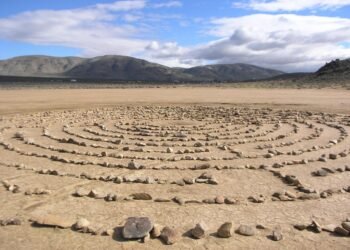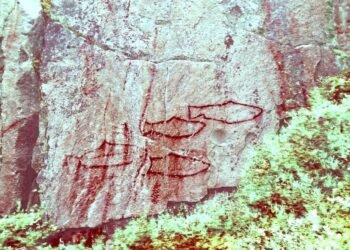Archaeologists have unearthed a cemetery containing the remains of 54 children, all aged between 0 and 6 years old, in the Kulp district of Diyarbakır, southeastern Turkey.
The excavation was prompted by the discovery of coins from the Byzantine Emperor Anastasius I period during surface surveys in İnkaya Neighborhood. The team, consisting of 15 experts and 35 individuals, intensified their efforts after finding the remains of a 1500-year-old church last year. The excavations took place in an area previously identified as an old stone quarry.
Mujdat Gizligöl, the Acting Director of Diyarbakır Museum, said: “So far, we have found 50 graves in the excavation works here. Today, we reached 4 more graves. The excavation process is currently ongoing. Therefore, we know there are a total of 54 graves. This is a very interesting result for us.” Gizligöl explained that in all likelihood, after this place was used as a stone quarry, it was transformed into a necropolis (a place where mass graves are located), and only children were buried here.”
The graves, carefully arranged in an east-west direction, exhibited a distinctive feature—limestone coffins surrounding them. Gizligöl emphasized the rarity of such burial sites exclusively dedicated to children, prompting the need for a comprehensive study on the age, sex, and causes of death of the collected bones.
Dr. Nazlı Akbaş, a research assistant and anthropologist at Gaziantep University Social Sciences Institute, linked the discovery to early Byzantine Christianity’s baptismal culture. She suggested, “We think that these belong to the early Christian period. Therefore, babies and children who have not been baptized, that is, who are not yet Christians. Since they were not baptized, we are considering the possibility of them being buried outside the church rather than inside it.”
Akbaş dismissed the likelihood of an epidemic being the cause of death, emphasizing the need for a more detailed skeletal study. She drew parallels with the Amorium excavations in Afyonkarahisar, where a similar graveyard from the 10th and 11th centuries revealed only babies and children buried, accompanied by the presence of a baptistery, a feature absent in the Kulp excavation.
Dr. Başak Oban, an archaeologist from the excavation team, expressed surprise and excitement at the discovery and stated: “I have never come across so many children’s graves collectively in any area I visited. The presence of a cemetery exclusively for children in one area is an interesting situation.”
The excavation was initiated in 2018 with the support of the State Water Works in the rural İnkaya neighborhood. The uncovering of this unique child cemetery challenges previous assumptions about burial practices and religious rituals during the early Christian period in southeastern Turkey.






















